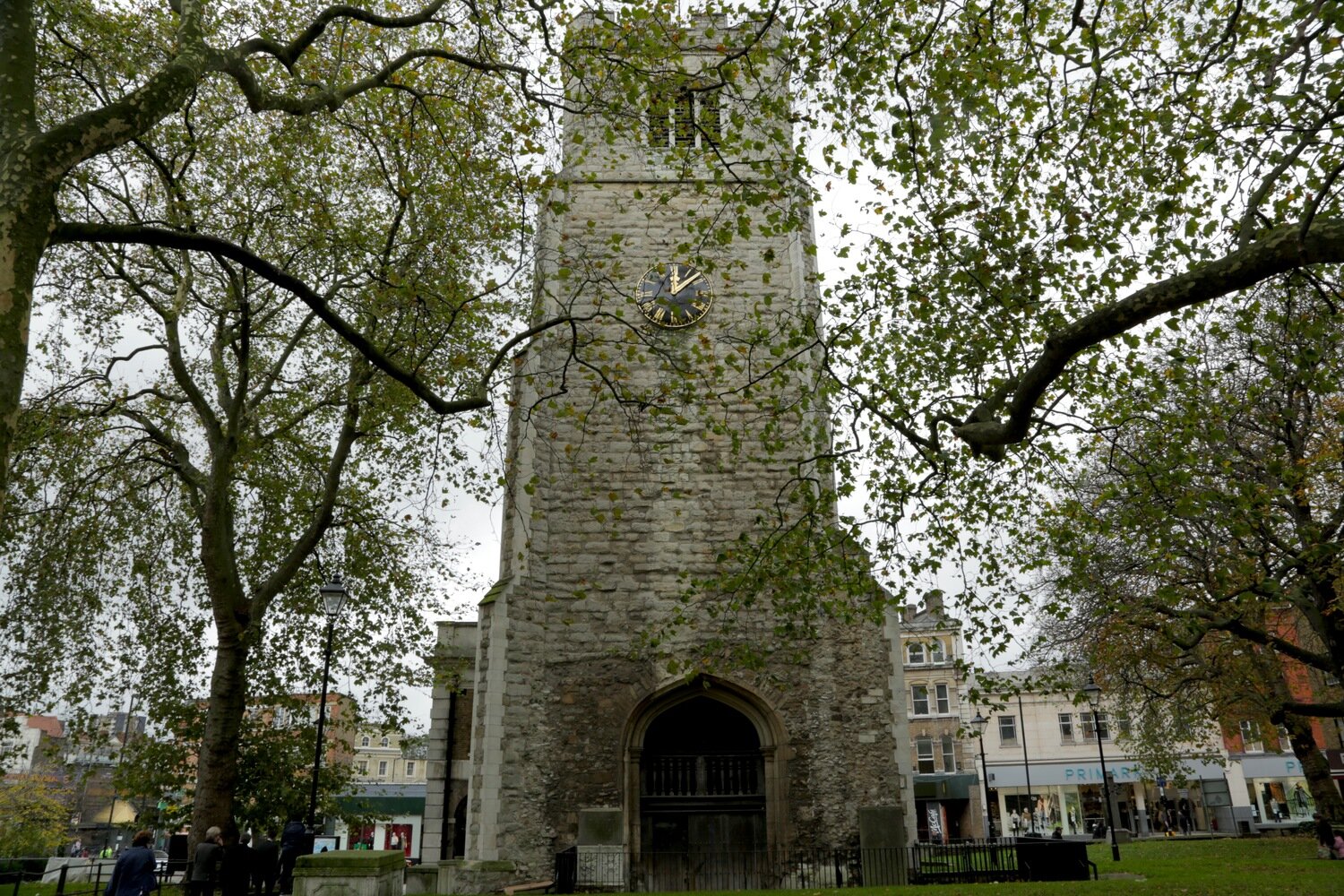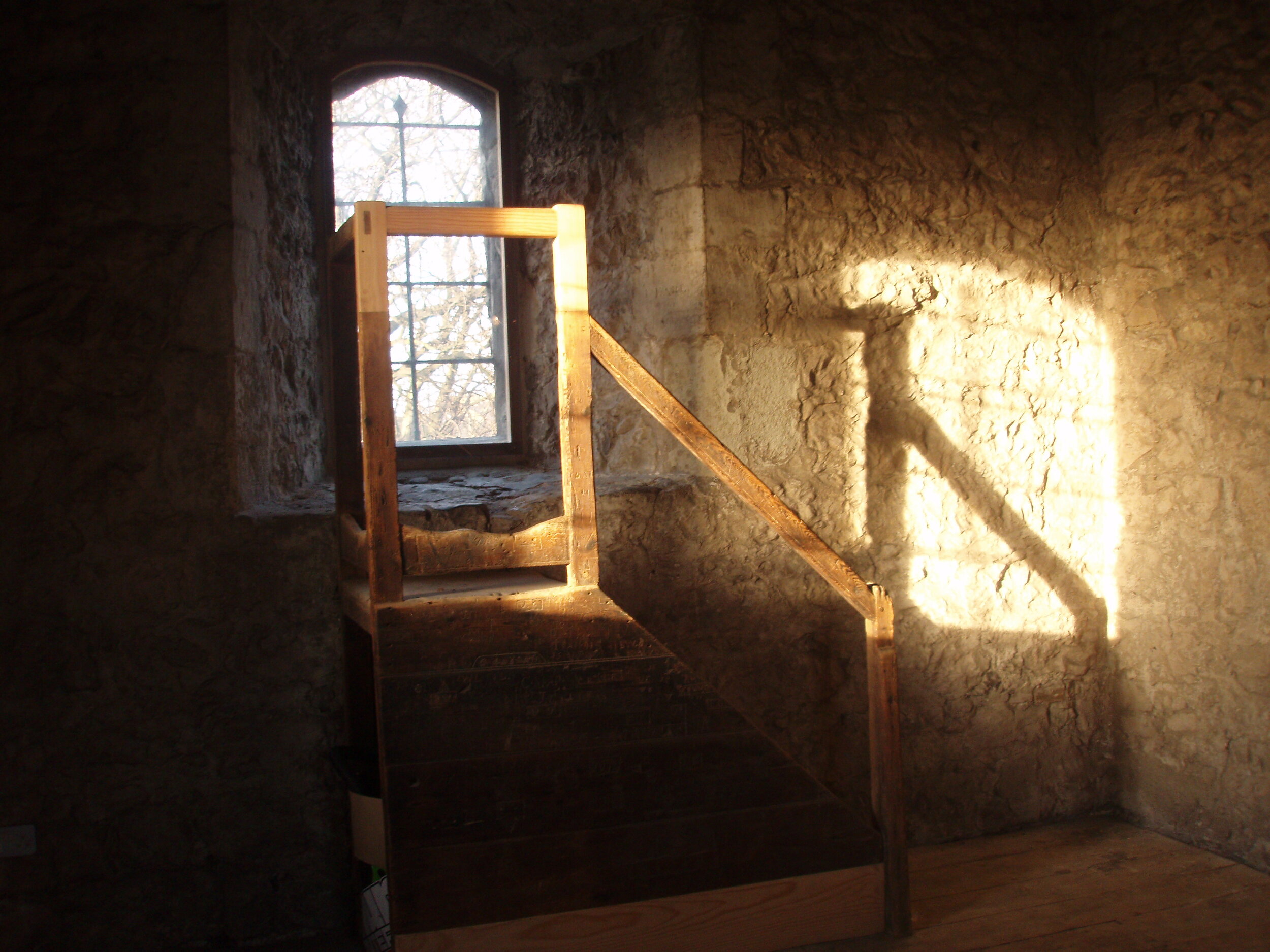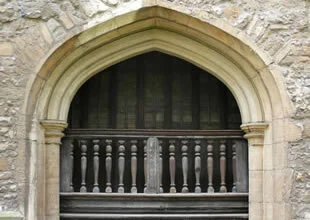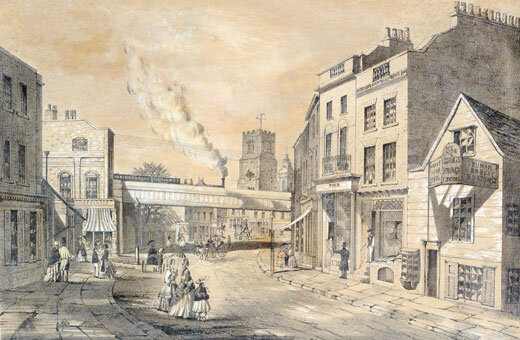St. Augustine’s Tower
St. Augustine's Tower is Hackney's oldest building, having survived when the rest of the original parish church was demolished in 1798.
A familiar landmark, it stands in the centre of the ancient village of Hackney, and appears on the Borough's coat of arms. It is listed Grade 1, and is therefore in the top 2% of buildings listed in the country.










History of St. Augustine's Tower
The tower is all that remains of the old church of St. Augustine, which was built at the end of the thirteenth century when Hackney was a village separated by fields from the City of London.
During the 17th century the dedication changed to St. John. Why the change of name? The Knights Templar, a military order, were important landowners in Hackney, and probably gave the land on which the church was built. They were influenced by the writings of St. Augustine, Bishop of Hippo. After the order was suppressed in 1308, their estates passed to another military religious order, the Knights Hospitaller, or Knights of St. John, and this led to the church being renamed St. John-at-Hackney. In turn, the Order of the Knights of St. John was dissolved during the Reformation, and its property in Hackney passed to other owners.
The Tower and Church
The images show the church of St. Augustine in the 17th century, with the tower at the west corner of the church. During the 16th and 17th centuries, the church was extended by the addition of the Rowe chapel at the south side of the chancel, and the vestry at the other. During the 17th and 18th centuries the congregation grew considerably, and the church became more crowded. Galleries were added in the mid-17th century, and there were other piecemeal additions to increase the seating capacity during the 18th century. Although the seating had been increased to 1,000 by 1789, this was still insufficient for the large congregation, and the Vestry secured an Act to rebuild in 1790. An Act was required to increase the church rate as a way of financing the new building. The rate in Hackney was increased to 3d in the pound, leading to protests from some ratepayers.
The new church of St. John-at-Hackney (which is the one we know today), designed by James Spiller, was begun in 1791 and completed in 1797. It was built without a steeple. One was eventually completed in 1814, but the bells stayed in St. Augustine’s Tower for another forty years because the new steeple was not strong enough to bear their weight. The bells were finally moved to the new church after it was underpinned in 1854.
Next to the old church was the Church House, also known as Urswick’s House. This was demolished in 1797 and replaced by the first Hackney Town Hall in 1802. To the south of the Church House stood the cage, a strong wooden cell for the temporary detention of prisoners, and just beyond the lynch gate stood the whipping post.
Once the new church was built, the old church became redundant, and was demolished in 1798 when the materials were sold off. The tower should have been demolished as well, but was left standing to house the bells. It was reported that the demolition was too tough a job for the contractor and happily no one pressed him to fulfil his contract.
Architecture of St. Augustine's Tower
The tower is built of coursed rubble masonry and contains four floors, connected by a spiral stone staircase (see diagram). The upper floors each contain part of the workings of the clock. The pendulum case is on the first floor, the clock room is on the second floor, and the bell room is on the third.
The clock faces are a later addition; they are at second floor level, connected internally to each other and to the clock mechanism by a steel spindle. Originally, the clock’s chiming was the only way to tell the time in the village.
The clock
The clock is of historical significance, and has been dated to the late 16th or early 17th century. It was manually wound for over 400 years. Recently, auto winding has been installed to protect the mechanism.
The Curator of Horology at the Royal Observatory in Greenwich says:
The clock at St. John's at Hackney is an example of a relatively small group of English clocks, considered to date from the 1580s but continuing to be made to a traditional design until the end of the seventeenth century. Notable examples include the Dover Castle Clock (Science Museum), the Cassiobury Park Clock (British Museum) and the clock now exhibited at Clandon Park, Surrey. Although the St. John’s clock has been extensively altered… enough of its original fabric remains to justify its preservation. Its mention in the parish documents greatly adds to its historical importance, both individually and as a member of the group.
All the clocks mentioned above are believed to have originated from the same workshop. However, the maker’s name remains unknown.
Restoration of St. Augustine's Tower
In 1929, Hackney Council bought the tower from the church to save it from demolition. Since then, some maintenance work has been carried out: in 1933, the battlements were repaired and some of the stone facings were replaced. In 1983, the tower was renovated under the Urban Programme Environment Project’s Facelift scheme.
Hackney Historic Buildings Trust has had responsibility for the Tower since 1990 and has raised funding to make urgent repairs. In 2005, The Heritage Lottery Fund awarded £231,000 to help preserve this important but neglected building. Hence, improvements at St Augustine's Tower - including physical repairs to the stonework, improved lighting and glazing, and flat level access to the ground floor have all recently been carried out.
The Tower is now open to the public more frequently than in previous years with new informative exhibition panels, a touch screen terminal which uses virtual reality to show the tower in its original setting, a range of leaflets and education packs and access to the roof for the first time. The Trust keeps the unique early seventeenth century turret clock in working order and opens the Tower on the last Sunday of every month to the public. During recent years artists have used the building for exhibitions.











